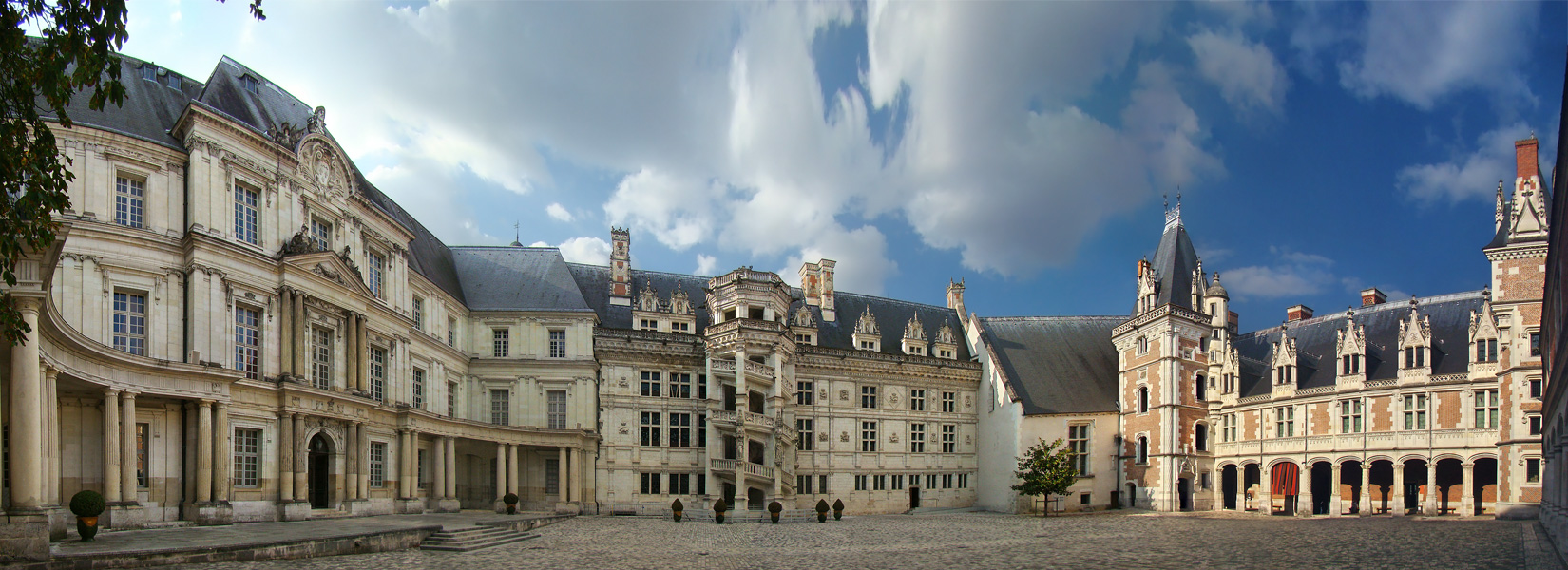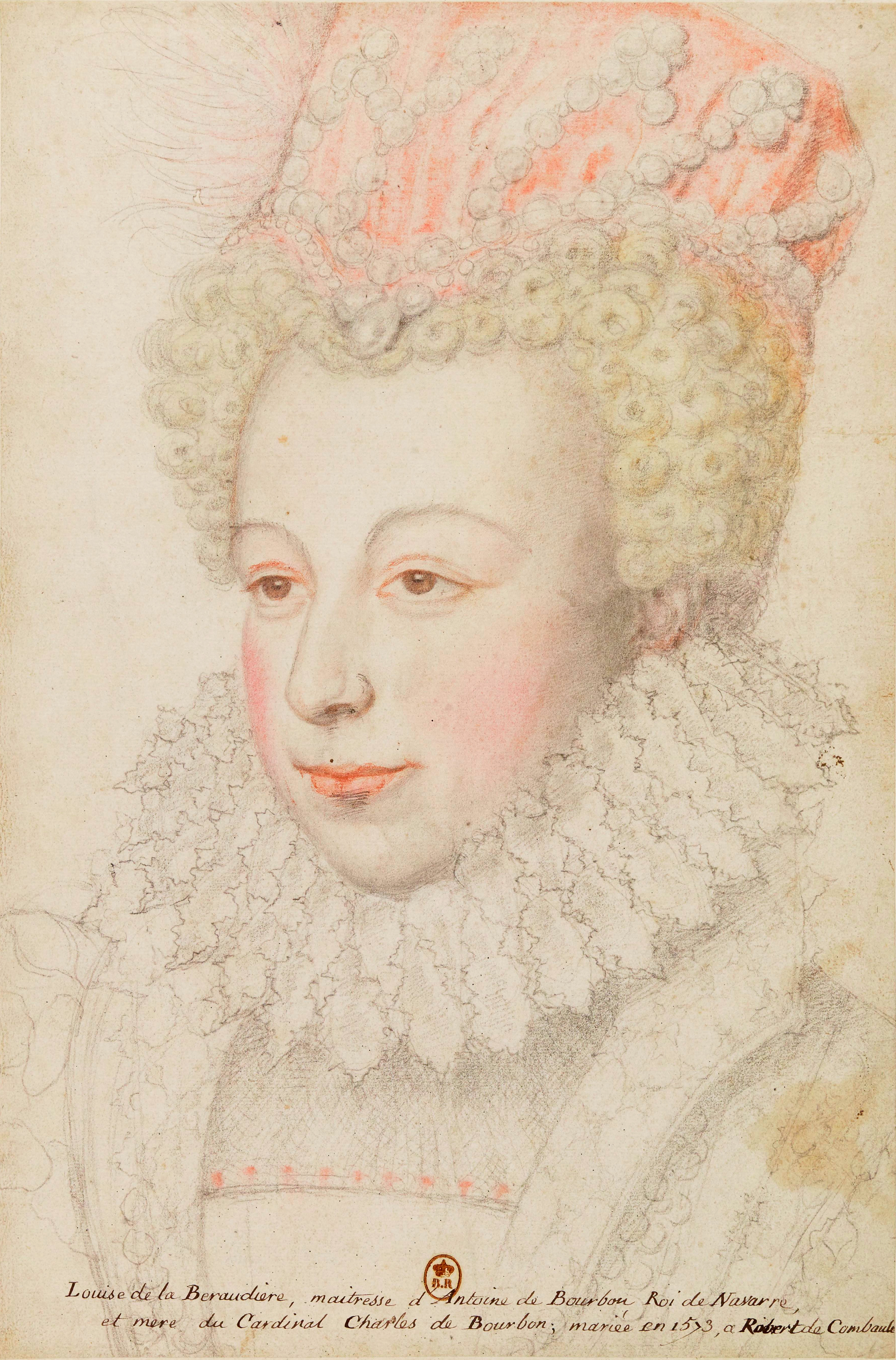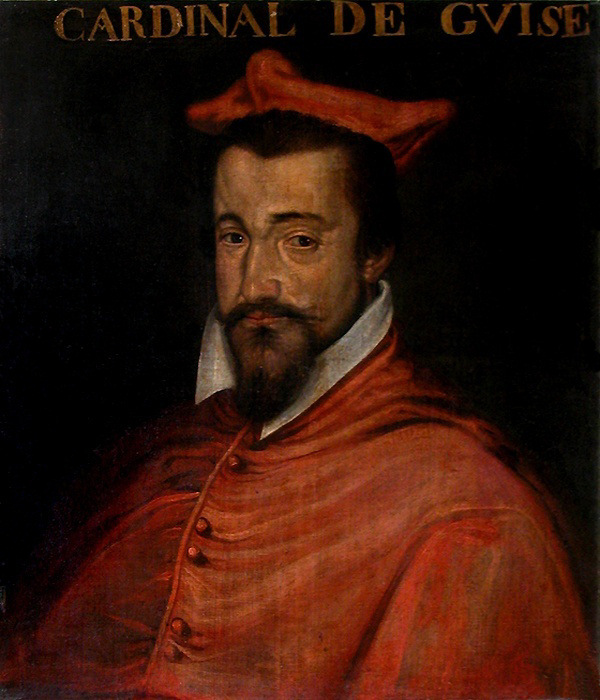|
Forty-five Guards
The Forty-five guards were recruited by Jean Louis de Nogaret de La Valette, Duke of Épernon to provide Henry III of France with trusted protection in the midst of the War of the Three Henrys. The Forty-five were noblemen of lesser nobility (many from Gascony) with little more than a horse, a sword, and a few acres to live on. In the king's service, they were paid a lavish wage (by their standards). In return, 15 of them were to be on duty, day or night, ready at the king's call. After the Catholic League revolt in Paris, King Henry III was forced to flee to Blois, there, he staged a coup, regaining control of the Estates-General by employing the Forty-five to kill Henry I, Duke of Guise when he came to meet the king at the Château de Blois on 23 December 1588, and his brother, Louis II, Cardinal of Guise, the following day. After the king was assassinated by Jacques Clément, the crown of France passed to Henry IV of Navarre; the Forty-five also passed to him and served ... [...More Info...] [...Related Items...] OR: [Wikipedia] [Google] [Baidu] |
Jean Louis De Nogaret De La Valette, Duke Of Épernon
Jean Louis de Nogaret de La Valette (1554–1642), created Duke of Épernon, was a powerful member of the French nobility at the turn of the 17th century. He was deeply involved in plots and politics throughout his life. Life He was born at Château de Caumont in Gascony, the son of Jean de Nogaret de La Valette and Jeanne de Saint-Lary de Bellegarde. His father and grandfather being both military men, it was natural that young Jean Louis would choose a soldier's life. He fought on the Catholic side in the French Wars of Religion; at the Siege of La Rochelle (1572–1573), he first came to the notice of the duc d'Anjou, the future Henry III of France. By December 1578, Nogaret had been accepted into Henri's most intimate circle of favourites, ''Les Mignons''. In 1581, Henry sold him the town of Épernon, at the same time raising it to the rank of a duchy thus creating Nogaret the first duc d'Épernon. The new duke of Épernon was highly favored by Henry, who showered titles u ... [...More Info...] [...Related Items...] OR: [Wikipedia] [Google] [Baidu] |
Henry III Of France
Henry III (french: Henri III, né Alexandre Édouard; pl, Henryk Walezy; lt, Henrikas Valua; 19 September 1551 – 2 August 1589) was King of France from 1574 until his assassination in 1589, as well as King of Poland and Grand Duke of Lithuania from 1573 to 1575. As the fourth son of King Henry II of France, he was not expected to inherit the French throne and thus was a good candidate for the vacant throne of the Polish–Lithuanian Commonwealth, where he was elected List of Polish rulers#Polish–Lithuanian Commonwealth, 1569–1795, monarch in 1573. During his brief rule, he signed the Henrician Articles into law, recognizing the szlachta's right to Royal elections in Poland, freely elect their monarch. Aged 22, Henry abandoned Poland–Lithuania upon inheriting the French throne when his brother, Charles IX of France, Charles IX, died without issue. France was at the time plagued by the French Wars of Religion, Wars of Religion, and Henry's authority was undermi ... [...More Info...] [...Related Items...] OR: [Wikipedia] [Google] [Baidu] |
Gascony
Gascony (; french: Gascogne ; oc, Gasconha ; eu, Gaskoinia) was a province of the southwestern Kingdom of France that succeeded the Duchy of Gascony (602–1453). From the 17th century until the French Revolution (1789–1799), it was part of the combined Province of Guyenne and Gascony. The region is vaguely defined, and the distinction between Guyenne and Gascony is unclear; by some they are seen to overlap, while others consider Gascony a part of Guyenne. Most definitions put Gascony east and south of Bordeaux. It is currently divided between the region of Nouvelle-Aquitaine (departments of Landes, Pyrénées-Atlantiques, southwestern Gironde, and southern Lot-et-Garonne) and the region of Occitanie (departments of Gers, Hautes-Pyrénées, southwestern Tarn-et-Garonne, and western Haute-Garonne). Gascony was historically inhabited by Basque-related people who appear to have spoken a language similar to Basque. The name Gascony comes from the same root as the word Basq ... [...More Info...] [...Related Items...] OR: [Wikipedia] [Google] [Baidu] |
Catholic League (French)
The Catholic League of France (french: Ligue catholique), sometimes referred to by contemporary (and modern) Catholics as the Holy League (), was a major participant in the French Wars of Religion. The League, founded and led by Henry I, Duke of Guise, intended the eradication of Protestantism from Catholic France, as well as the replacement of King Henry III. Pope Sixtus V, Philip II of Spain, and the Jesuits were all supporters of this Catholic party. Origins Local confraternities were initially established by French Catholics to counter the Edict of Beaulieu in 1576. King Henry III placed himself at the head of these associations as a political counter to the ultra-Catholic League of Peronne. Following the repudiation of that edict by the Estates General, most of the local leagues were disbanded. Following the illness and death of Francis, duke of Anjou, heir to the French throne, on 10 June 1584, Catholic nobles gathered at Nancy. In December 1584, the League drew up ... [...More Info...] [...Related Items...] OR: [Wikipedia] [Google] [Baidu] |
Paris
Paris () is the capital and most populous city of France, with an estimated population of 2,165,423 residents in 2019 in an area of more than 105 km² (41 sq mi), making it the 30th most densely populated city in the world in 2020. Since the 17th century, Paris has been one of the world's major centres of finance, diplomacy, commerce, fashion, gastronomy, and science. For its leading role in the arts and sciences, as well as its very early system of street lighting, in the 19th century it became known as "the City of Light". Like London, prior to the Second World War, it was also sometimes called the capital of the world. The City of Paris is the centre of the Île-de-France region, or Paris Region, with an estimated population of 12,262,544 in 2019, or about 19% of the population of France, making the region France's primate city. The Paris Region had a GDP of €739 billion ($743 billion) in 2019, which is the highest in Europe. According to the Economist Intelli ... [...More Info...] [...Related Items...] OR: [Wikipedia] [Google] [Baidu] |
Blois
Blois ( ; ) is a commune and the capital city of Loir-et-Cher department, in Centre-Val de Loire, France, on the banks of the lower Loire river between Orléans and Tours. With 45,898 inhabitants by 2019, Blois is the most populated city of the department, and the 4th of the region. Historically, the city was the capital of the county of Blois, created on 832 until its integration into the Royal domain in 1498, when Count Louis II of Orléans became King Louis XII of France. During the Renaissance, Blois was the official residence of the King of France. History Pre-history Since 2013, excavations have been conducted by French National Institute of Preventive Archaeological Research (''INRAP'' in French) in Vienne where they found evidence of "one or several camps of late Prehistory hunter-gatherers, who were also fishermen since fishing traps were found there.. ..They were ancestors of the famous Neolithic farmer-herders, who were present in current France around 6,000 BC ... [...More Info...] [...Related Items...] OR: [Wikipedia] [Google] [Baidu] |
Estates General (France)
In France under the Ancien Régime, the Estates General (french: États généraux ) or States-General was a legislative and consultative assembly of the different classes (or estates) of French subjects. It had a separate assembly for each of the three estates (clergy, nobility and commoners), which were called and dismissed by the king. It had no true power in its own right as, unlike the English Parliament, it was not required to approve royal taxation or legislation. It served as an advisory body to the king, primarily by presenting petitions from the various estates and consulting on fiscal policy. The Estates General first met in 1302 and 1303 in relation to King Philip IV's conflict with the papacy. They met intermittently until 1614 and only once afterward, in 1789, but were not definitively dissolved until after the French Revolution. The Estates General were distinct from the ''parlements'' (the most powerful of which was the Parliament of Paris), which started as ap ... [...More Info...] [...Related Items...] OR: [Wikipedia] [Google] [Baidu] |
Henry I, Duke Of Guise
Henry I, Prince of Joinville, Duke of Guise, Count of Eu (31 December 1550 – 23 December 1588), sometimes called ('Scarface'), was the eldest son of Francis, Duke of Guise, and Anna d'Este. His maternal grandparents were Ercole II d'Este, Duke of Ferrara, and Renée of France. Through his maternal grandfather, he was a descendant of Lucrezia Borgia and Pope Alexander VI. A key figure in the French Wars of Religion, he was one of the namesakes of the War of the Three Henrys. A powerful opponent of the queen mother, Catherine de' Medici, Henry was assassinated by the bodyguards of her son, King Henry III. Early life Henry was born on 31 December 1550, the eldest son of Francis Duke of Guise, one of the leading magnates of France, and Anna d'Este, daughter of the Duke of Ferrara. In his youth he was friends with Henry III, the future king, and at the behest of Jacques, Duke of Nemours tried to persuade the young prince to run away with him in 1561 to join the arch-Catholic ... [...More Info...] [...Related Items...] OR: [Wikipedia] [Google] [Baidu] |
Château De Blois
A château (; plural: châteaux) is a manor house or residence of the lord of the manor, or a fine country house of nobility or gentry, with or without fortifications, originally, and still most frequently, in French-speaking regions. Nowadays a ''château'' may be any stately residence built in a French style; the term is additionally often used for a winegrower's estate, especially in the Bordeaux region of France. Definition The word château is a French word that has entered the English language, where its meaning is more specific than it is in French. The French word ''château'' denotes buildings as diverse as a medieval fortress, a Renaissance palace and a fine 19th-century country house. Care should therefore be taken when translating the French word ''château'' into English, noting the nature of the building in question. Most French châteaux are " palaces" or fine "country houses" rather than "castles", and for these, the word "château" is appropriate in English ... [...More Info...] [...Related Items...] OR: [Wikipedia] [Google] [Baidu] |
Louis II, Cardinal Of Guise
Louis II, Cardinal of Guise (6 July 1555, Dampierre – 24 December 1588, Château de Blois), was the third son of Francis, Duke of Guise, and Anna d'Este. Life He was elected archbishop of Reims in 1574, succeeding his uncle, Charles of Guise. On 21 February 1578, he was created cardinal; he took the title of Cardinal of Guise, succeeding his uncle, Louis I, Cardinal of Guise. He was later named papal legate to Avignon, and made by Henry III of France a knight of the Order of Saint Esprit. His dedication to the cause of his brother Henry I, Duke of Guise, and intransigence to the royal power provoked the hostility of Henry III. At the royal command, the Cardinal was assassinated at the Château de Blois by the King's bodyguard known as " the Forty-five", the day after his brother. Louis had an illegitimate son: * Louis ''bâtard de Guise'' (1588–1631), born of his ''liaison'' with Aimerie de Lescheraine, ''dame de Grimaucourt'', was legitimised in 1610, after his fathe ... [...More Info...] [...Related Items...] OR: [Wikipedia] [Google] [Baidu] |
Jacques Clément
Jacques Clément (1567 – 1 August 1589) was a French conspirator and the assassin of King Henry III. He was born at Serbonnes, in today's Yonne ''département'', in Burgundy, and became a Dominican lay brother. During the French Wars of Religion, Clément became fanatically religious and an ardent partisan of the Catholic League. Viewing Protestantism as heresy, he talked of exterminating the Huguenots and formed a plan to assassinate Henry III in retaliation for the killing of the Duke of Guise and his brother. His project was encouraged by some of the heads of the League, in particular Catherine de Guise, the Duchess Montpensier. He was assured of worldly rewards if he succeeded and of eternal bliss if he failed. Having obtained letters for the king, he left Paris on 31 July 1589 and reached Saint-Cloud, the headquarters of Henry, who was besieging Paris, on 1 August 1589. Assassination Clément was admitted to the king's presence, and while he was presenting his letter ... [...More Info...] [...Related Items...] OR: [Wikipedia] [Google] [Baidu] |







